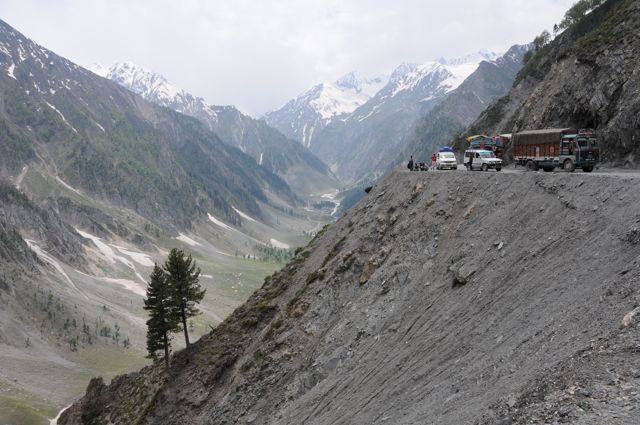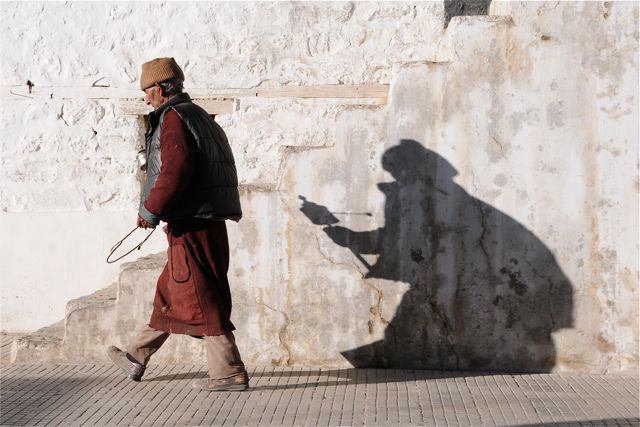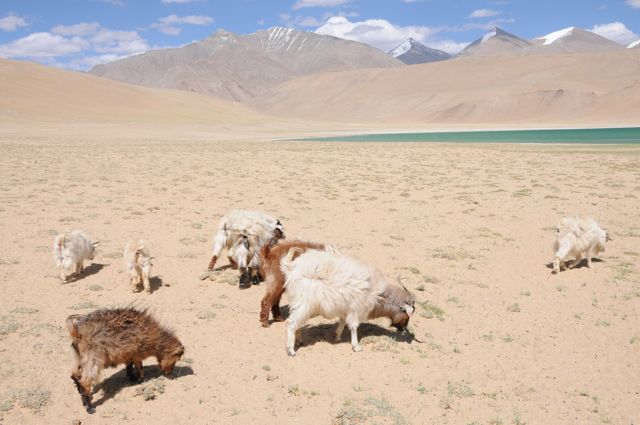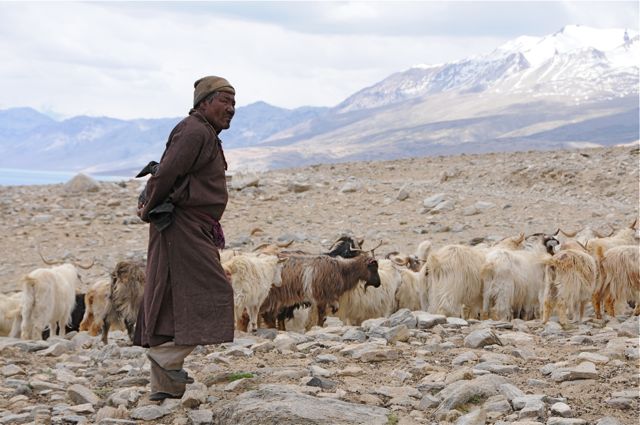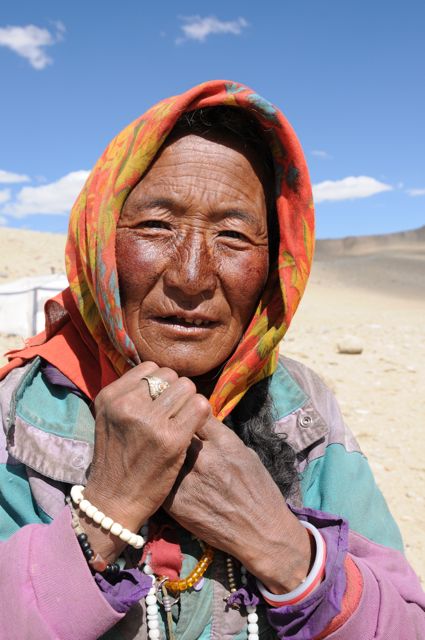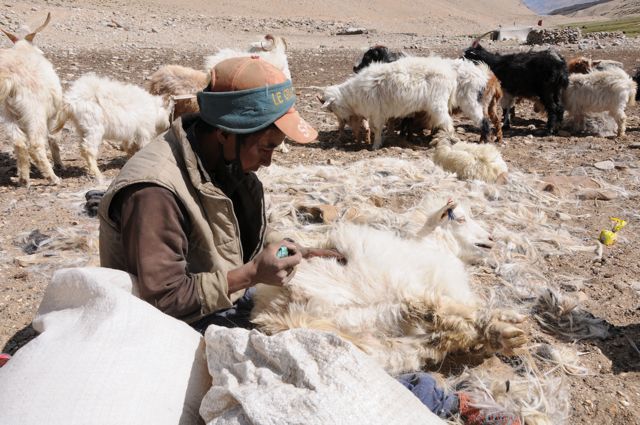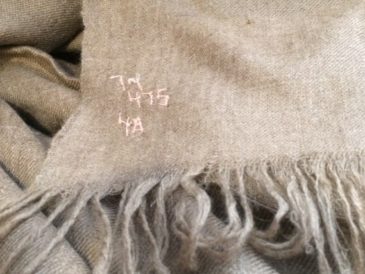TUESDAY
300 km and 1790m of altitude separate Srinagar from Leh, the capital of Ladakh, it will take me 2 days to go through them. The small bus rushes to the bumpy road that winds through the mountains. Gradually the green valley of Kashmir gives way to the aridity of ladakhis landscapes, dotted with white houses with flat roof and gompas nestled on the heights, on a background of blue sky of absolute purity.
WEDNESDAY
So here I am in Leh, the ancient capital of the Buddhist kings of Ladakh. Another culture, almost another world … But let’s go back to our sheep, or rather to our goats!
The capra hircus, or goat pashmina is traditionally bred by the Chang-Pa shepherds who lead a nomadic life on the Himalayan highlands, especially in ChangTang, near Lake Tso Moriri. They would be there now, so that’s where I go. The bus connects Leh to Korzok 3 times a month, no luck it was yesterday. As I do not expect to wait another 10 days, I have to find a jeep to share …
SUNDAY
And it’s gone for 8 hours. I will pass you the unexpected stops, this time it was the construction of a bridge by the army. They close the road 3h, are busy setting their bridge, then reopen briefly to let the vehicles that waited and it starts again. Traveling in Asia teaches patience …
But the goal is close and I see the first tents in yak hair. It is a very rough life, winter temperatures reach -30 ° C. The shepherds lead the herds in the pastures, the colder the goat, the better the quality of its down, and it ensures their livelihood. To avoid any drift and protect the nomads, the price was set by the Indian state, 3700 Rp for 2 kg of raw duvet (or 50 euros). The man explains that formerly some Kashmiri traders came to exchange the down for rice, taking advantage of their ignorance. Fortunately, it will not happen again. Extremely artisanal and traditional, the production of cashmere in Ladakh represents only about 2% of world production, far behind the absolute leader, Inner Mongolia (People’s Republic of China). Nevertheless the pashmina down will ONLY be produced in the Himalayan regions.
The goat is combed in the morning to collect the inner fleece, also called fluff or down; then the longest hairs are cut with shears. She does not seem too much to love the poor, the pashmina goat is a princess who does not like being pulled out …
A piece of the world lost on the borders of India and China, at the top of this Himalayas where the azure sky is lost in the purity of the waters of the mountain lakes, an arid land, goats, yaks, and these men skin tanned by the extreme rigor of the climate that still continue to lead the same nomadic life as their ancestors.
This is where the adventure of Pashmina begins …

